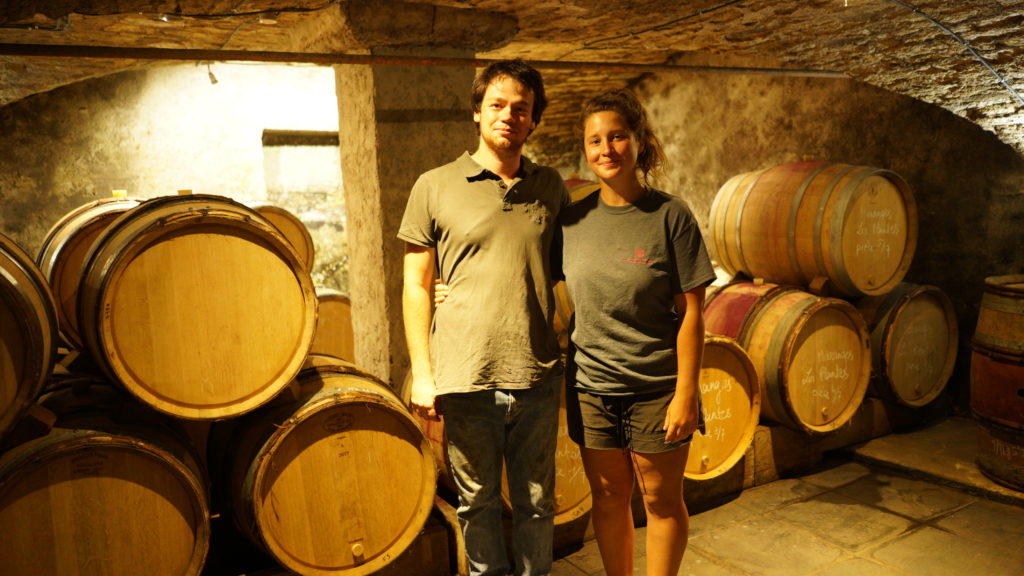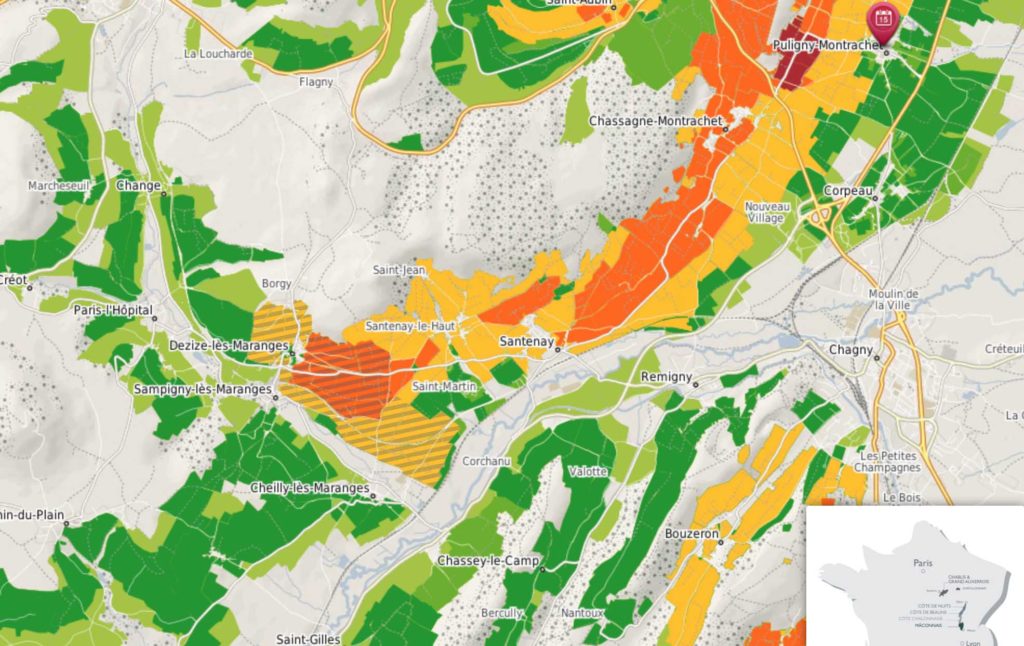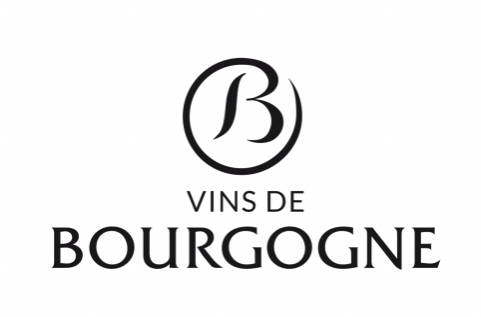I find it gratifying to promote new, talented people and estates; it’s one of the primary functions of the Winehog.
To explain this initiative a bit further, while I find the work of young vignerons like Charles Lachaux truly admirable, these well-known producers already have the full attention of the wine world and, furthermore, plenty of great vineyards with which to express themselves.
The young, small negociants and estates do not, however, necessarily have the same exposure or access to noble terroirs, although their efforts are at least as admirable and enjoyable.
The Winehog “Flavour of the Year” award is for these young and/or new talents in Burgundy.
Domaine de Cassiopée – flavour of 2021
The 2021 “Flavour of the Year” award goes to Domaine de Cassiopée – Talloulah Dubourg and Hugo Mathurin – for wines from the 2020 vintage.

They were chosen for taking on the Maranges appellation and finding new, interesting terroirs to express and promote. And in their first vintage, they showed themselves able to produce so much hedonistic joy.
Their wines are pure and energetic, with magnificent transparency and such strong expressions of terroir that I’m stunned by the cuvees they have created.
Hugo Mathurin and Talloulah Dubourg founded Domaine de Cassiopée in January 2020. Located in Sampigny-lès-Maranges, the domaine covers five hectares, mainly in the Hautes Côtes de Beaune, Maranges, and Bourgogne appellations. Talloulah and Hugo took over the vines and immediately proceeded to convert to organic viticulture, which will be effective in 2023.
A dynamic, knowledgeable duo (both trained oenologists, with experience from estates like Clos de Tart, Mugnier, and Roulot), Talloulah completed her oenology diploma before working for Marie-Hélène Chappaz in Switzerland.
I am impressed by the different cuvees created; I especially find the aligoté – made in both oak and amphora – to be a very exciting wine.
See my first article about Domaine de Cassiopée here.
Sampigny-lès-Maranges
The Maranges appellation is divided among three villages located south of Santenay and Chassagne-Montrachet, and Domaine de Cassiopée is at the eastern end, at the limit of the 1ers crus.
Sampigny-lès-Maranges contains the 1ers crus Les Clos Roussots, Le Clos des Rois, and Le Clos des Loyères.
Cassiopée does not currently own any 1er-cru vines, but it does have a number of interesting, old-vine parcels.
The Cassiopée vineyards
Maranges and its surroundings are, vineyard-wise, relatively unknown territory for me and most readers, and while there are definitely distinctive terroirs, I will let Talloulah and Hugo describe their vineyards in detail – including the yellow car. Thanks to these two for the description; very helpful indeed.
WHITE:
Bourgogne Aligoté Mitancherie: a 0.5-ha plot in Sampigny in front of the ‘Maranges hill,’ where the soil was considered too cold for wine 20 years ago; the vines are 30 years old.
Bourgogne Aligoté En Gerlieus (made 40% in amphorae/60% in barrel): En Gerlieus is located in Chassey-le-Camp, 10 km to the southeast, so no close neighbours, only forest. The aligoté vines are 40-100 years old.
Bourgogne Hautes-Côtes de Beaune Blanc Les Côtés: two thirds comes from a four-year-old planting on limestone rock, the rest from vines on granitic rock. The two plots face each other on the ‘cold hill.’
RED:
Bourgogne Hautes-Côtes de Beaune Rouge Les Côtés: Pinot noir on granitic rock.
Bourgogne Hautes-Côtes de Beaune Les Paizets: Pinot noir on limestone, on the same ‘cold hill’ as the red and white climat Les Côtés.
Bourgogne Rouge En Gerlieus: 0.9 ha in Chassey-le-Camp, beside the aligoté. Vines 50-70 years old.
Maranges le Bas du Clos: 90-year-old vines behind the house, where we assembled to discuss at the end of the tasting.
Maranges Les Plantes: 110-year-old vines beside the ‘yellow car.’
Two selected notes
White
The Bourgogne Aligoté En Gerlieus 2020 comes, as mentioned above, from 40- to 100-year-old vines. This is a much more mineral-intense wine, harvested a bit earlier (August 30). There is quite a difference between the barrel and the amphora versions, with the blended wine offering the best of both worlds. The amphora treatment does add effortlessness to the wine, with the barrel-fermented part adding edge and detail. With a tremendously mineral feel, this is both a balanced and an intense aligoté – very delicate, and with an elegant and clear aligoté signature. One of my favourite aligotés, alongside Nicholas Faure’s Bully.
(Drink from 2024) – Very Good+ – (90-91p) – Tasted 12/06/2021 – ![]()
The Maranges Les Plantes 2020 is yet another step up, thanks to its 110-year-old vines, which are in viewing distance from Talloulah and Hugo’s house. With gorgeous, silky, deep fruit, it is impressively intense, with red forest berries and an explosion of delicate fruit aromas. Lovely rose notes add to the complexity. This will be bottled in March 2022, and will doubtlessly offer a hedonistic joy otherwise unknown in this appellation. This is why this couple deserves all the recognition and praise they can get. The pure notes of forest berries are definitely collectible – at least for ‘Hogs!
(Drink from 2028) – Very Good – (90-91p) – Tasted 12/06/2021 – ![]()
Previous winners
This is a relatively new award and has only two previous winners: Domaine Garcia (previously Domaine Moron-Garcia) and Marthe Henri Boillot.
But in past years, estates like Nicolas Faure and Domaine Thomas Collardot in Puligny-Montrachet would have been favourites for “Flavour of the Year.”
Maison de Joncs with Jae Chu would also have been a strong candidate, but she is now at Château Grillet in the Rhone. I still hope to see Jae again on Burgundian turf in the years to come.



 - A true vin d’émotion – a Burgundy of passion
- A true vin d’émotion – a Burgundy of passion - A truly hedonistic wine – lively and enjoyable
- A truly hedonistic wine – lively and enjoyable - A vivacious wine for pure indulgance
- A vivacious wine for pure indulgance - A Vin Vif - fresh, energetic and with a light appearance
- A Vin Vif - fresh, energetic and with a light appearance
Leave a Reply
You must be logged in to post a comment.